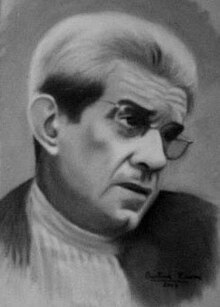
Back Въображаемото Bulgarian Das Imaginäre German El Imaginario (psicoanálisis) Spanish Tatanan imajiner ID O Imaginário Portuguese Воображаемое (Лакан) Russian

The Imaginary (or Imaginary Order) is one of three terms in the psychoanalytic perspective of Jacques Lacan, along with the Symbolic and the Real. Each of the three terms emerged gradually over time, undergoing an evolution in Lacan's own development of thought. "Of these three terms, the 'imaginary' was the first to appear, well before the Rome Report of 1953…[when the] notion of the 'symbolic' came to the forefront."[1]: 279 Indeed, looking back at his intellectual development from the vantage point of the 1970s, Lacan epitomised it as follows:
"I began with the Imaginary, I then had to chew on the story of the Symbolic ... and I finished by putting out for you this famous Real."[2]: 49
Accordingly, as Hoens and Puth (2004) express, "Lacan's work is often divided into three periods: the Imaginary (1936–1953), the Symbolic (1953–1963), and the Real (1963–1981)."[2]: 49 Regarding the former, "Lacan regarded the 'imago' as the proper study of psychology and identification as the fundamental psychical process. The imaginary was then the…dimension of images, conscious or unconscious, perceived or imagined."[1]: 279 It would be in the decade or two following his 1936 delivery of Le stade du miroir at Marienbad that Lacan's concept of the Imaginary was most fully articulated.
- ^ a b Sheridan, Alan. 1994. "Translator's Note" in The Four Fundamental Concepts of Psycho-Analysis, edited by J. Miller, Penguin Psychology Series. London: Penguin Books. ISBN 9780140242782.
- ^ a b As quoted in Mellard, James M. 2006. Beyond Lacan, SUNY series in Psychoanalysis and Culture. Albany: State University of New York Press. ISBN 9780791469040.
© MMXXIII Rich X Search. We shall prevail. All rights reserved. Rich X Search